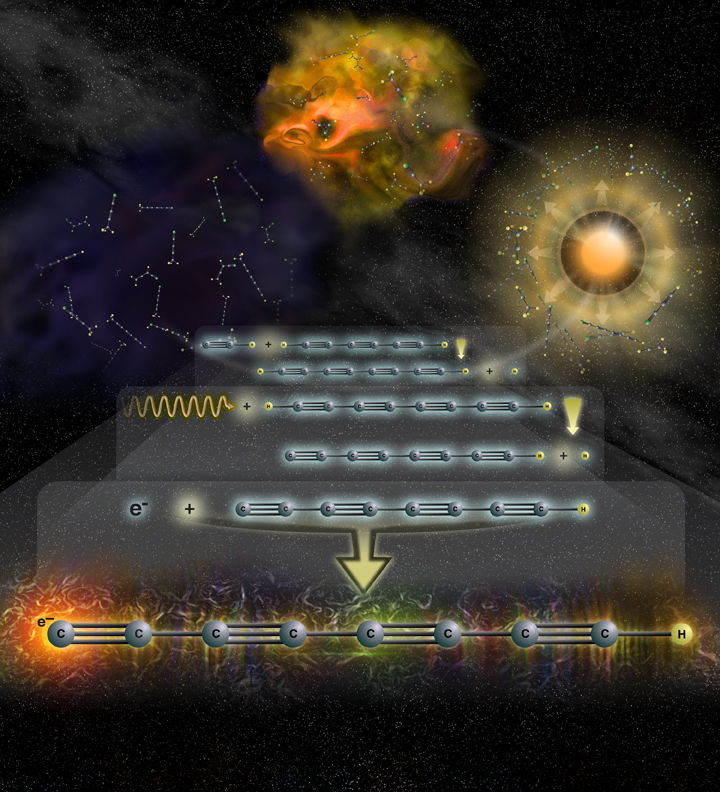Forming a large, negatively-charged molecule in space

Astronomers using the Robert C. Byrd Green Bank Telescope
found the negatively-charged form of octatetraynyl
(C8H-) in a cold interstellar cloud (middle left) and
in the gaseous envelope surrounding an old, evolved star (middle
right). This is the largest negatively-charged molecule yet
found in space. The scientists believe it probably is formed in
steps, illustrated here, proceeding downward.
1. A molecule of C2H attaches to a molecule
of C6H2, producing a molecule of
C8H2 and a hydrogen atom.
2. Radiation (squiggly line) breaks one hydrogen atom from the
C8H2, leaving C8H and
a hydrogen atom.
3. Finally, an electron attaches itself to the
C8H molecule, freeing a burst of radiation
(overall glow seen around the molecule) and
leaving the negatively-charged ion C8H-.
CREDIT: Bill Saxton, NRAO/AUI/NSF
High-Resolution TIFF of Above (40.1 MB)
More Detail: Building From Even Smaller Molecules
Five-Step Chemical Process (PDF File, 1.1 MB)
Caption for PDF Graphic
1. A molecule of C2H (Ethynyl) attaches to a molecule of C2H2 (acetylene), producing a molecule of C4H2 (diacetylene) and a hydrogen atom.
2. A molecule of C2H attaches to a molecule of C4H2, producing a molecule of C6H2 (triacetylene) and a hydrogen atom.
3. A molecule of C2H attaches to a molecule of C6H2, producing a molecule of C8H2 and a hydrogen atom.
4. Radiation (squiggly line) breaks one hydrogen atom from the C8H2 , leaving C8H and a hydrogen atom.
5. Finally, an electron attaches itself to the C8H molecule, freeing a burst of radiation (squiggly line) and leaving the negatively-charged ion C8H-.
CREDIT: Bill Saxton, NRAO/AUI/NSF
Modified on Friday, 20-Jul-2007 14:57:11 EDT